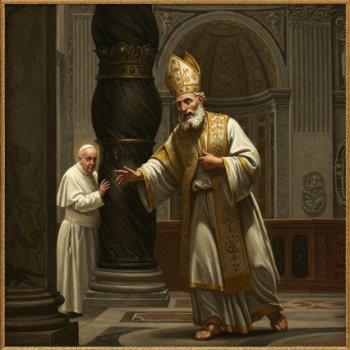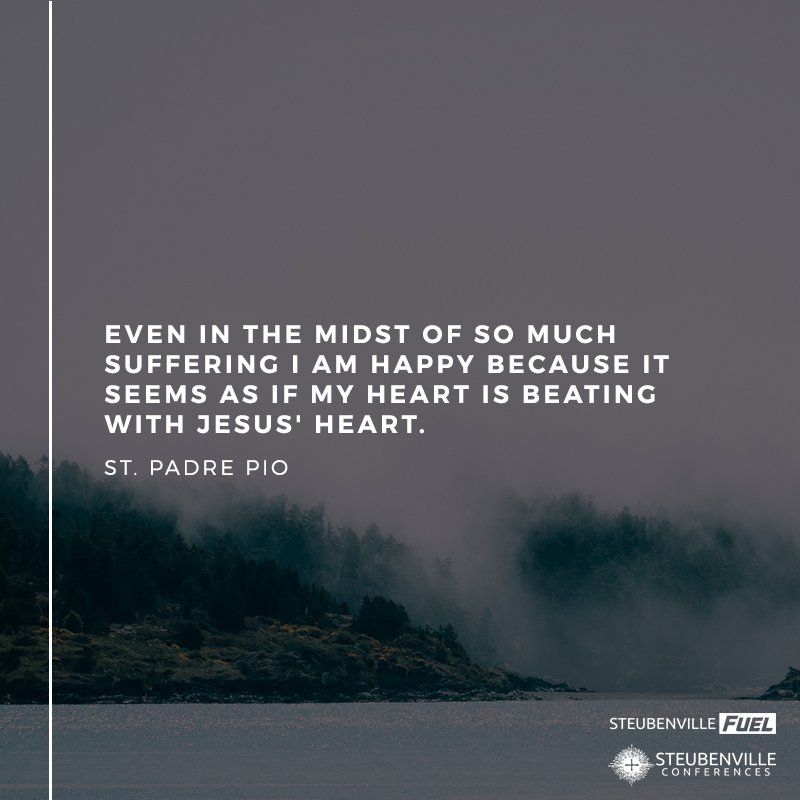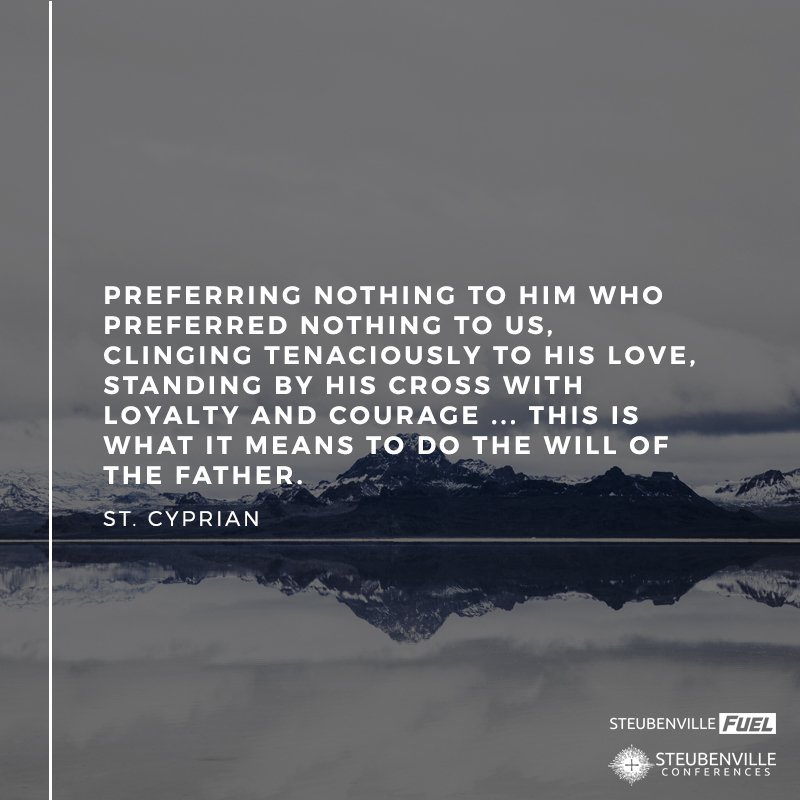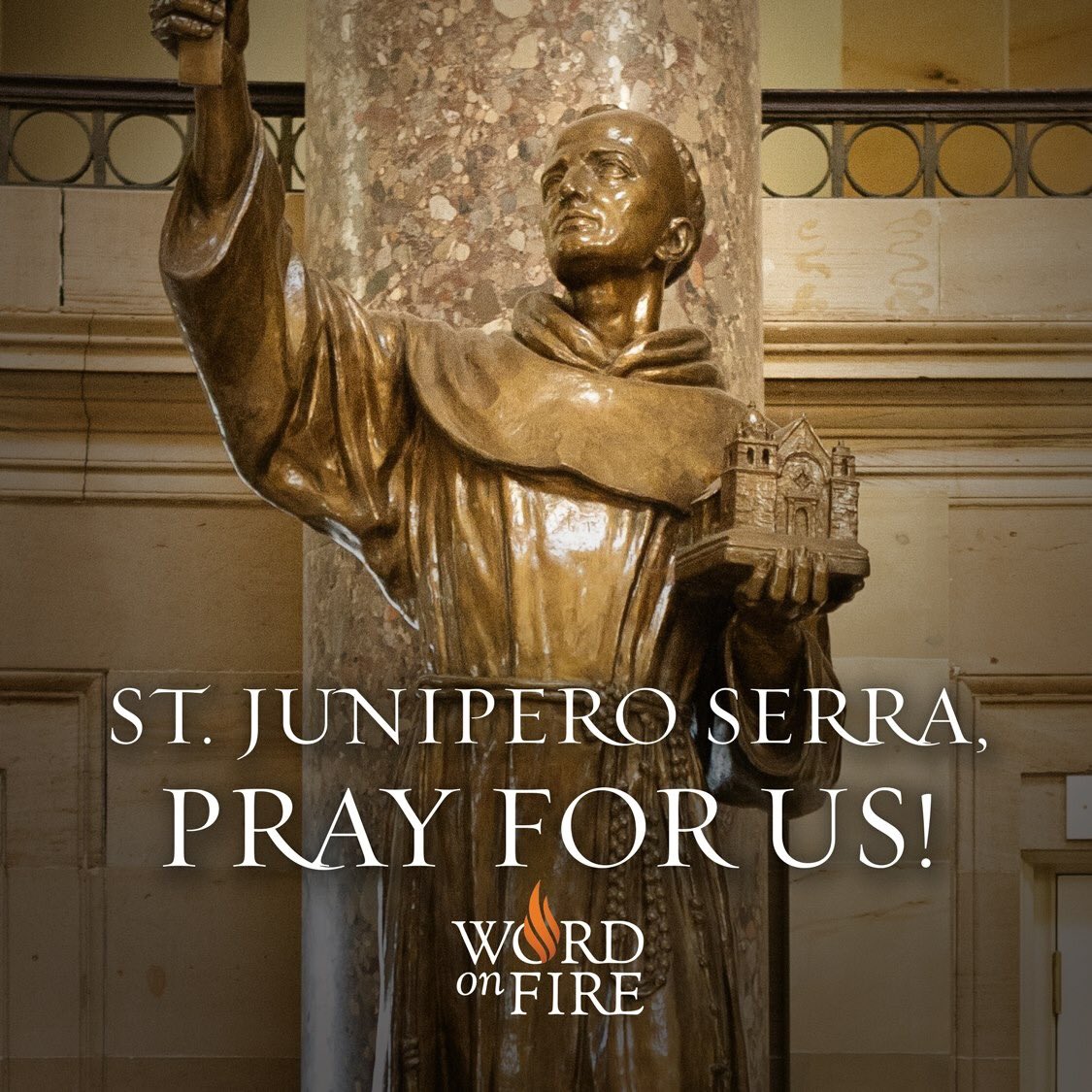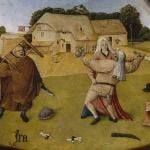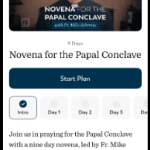1. Today is St. Peter Canisius’ feast day. New Advent’s briefing is here.
Ignatian Spirituality’s here.
Catholic News Agency’s here.
2.
"If you have too much to do, with God's help you will find time to do it all." –St. Peter Canisius
— Franciscan U (@FranciscanU) December 21, 2015
3. 12 things Fr. John Hardon had to say about him.
4. Pope Benedict said of him:
We must bear in mind that we are dealing with the time of the Lutheran Reformation, at the moment when the Catholic faith in the German-speaking countries seemed to be dying out in the face of the fascination of the Reformation. The task of Canisius — charged with revitalizing or renewing the Catholic faith in the Germanic countries — was almost impossible.
It was possible only by virtue of prayer. It was possible only from the centre, namely, a profound personal friendship with Jesus Christ, a friendship with Christ in his Body, the Church, which must be nourished by the Eucharist, his Real Presence.
And:
Friendship with Jesus had been inculcated in St Peter Canisius in the spiritual environment of the Charterhouse of Cologne, in which he had been in close contact with two Carthusian mystics: Johannes Lansperger, whose name has been Latinized as “Lanspergius” and Nikolaus van Esche, Latinized as “Eschius”.
He subsequently deepened the experience of this friendship, familiaritas stupenda nimis, through contemplation of the mysteries of Jesus’ life, which form a large part of St Ignatius’ Spiritual Exercises. This is the foundation of his intense devotion to the Heart of the Lord, which culminated in his consecration to the apostolic ministry in the Vatican Basilica.
The Christocentric spirituality of St Peter Canisius is rooted in a profound conviction: no soul anxious for perfection fails to practice prayer daily, mental prayer, an ordinary means that enables the disciple of Jesus to live in intimacy with the divine Teacher.
For this reason in his writings for the spiritual education of the people, our Saint insists on the importance of the Liturgy with his comments on the Gospels, on Feasts, on the Rite of Holy Mass and on the sacraments; yet, at the same time, he is careful to show the faithful the need for and beauty of personal daily prayer, which should accompany and permeate participation in the public worship of the Church.
This exhortation and method have kept their value intact, especially after being authoritatively proposed anew by the Second Vatican Council in the Constitution Sacrosanctum Concilium: Christian life does not develop unless it is nourished by participation in the Liturgy — particularly at Sunday Mass — and by personal daily prayer, by personal contact with God.
Among the thousands of activities and multiple distractions that surround us, we must find moments for recollection before the Lord every day, in order to listen to him and speak with him.
At the same time, the example that St Peter Canisius has bequeathed to us, not only in his works but especially with his life, is ever timely and of lasting value. He teaches clearly that the apostolic ministry is effective and produces fruits of salvation in hearts only if the preacher is a personal witness of Jesus and an instrument at his disposal, bound to him closely by faith in his Gospel and in his Church, by a morally consistent life and by prayer as ceaseless as love. And this is true for every Christian who wishes to live his adherence to Christ with commitment and fidelity.
5.
St. Peter Canisius, SJ, Doctor of the Church: pic.twitter.com/mP1DLEscqq
— Quang D. Tran, S.J. (@LeMeTellUSumtin) December 21, 2015
6.
Today, we remember St. Peter Canisius, whose devotion to Mary nourishes us today. #Advent https://t.co/VsjsHjbY0g pic.twitter.com/WFsHDjoQ30
— LoyolaPress (@loyolapress) December 21, 2015
7. From the Liturgy of the Hours today, from his writings:
Before he set out for Germany—he is rightly called the second apostle of that country—Saint Peter Canisius received the apostolic blessing, and underwent a profound spiritual experience. He describes it in these words.
“Eternal High Priest, you allowed me in your boundless goodness to commend the fruit and confirmation of that blessing to your apostles, to whom men go on pilgrimage to the Vatican and who there work wonders under your guidance. It was there that I experienced great consolation and the presence of your grace, offered to me through these great intercessors. They too gave their blessings, and confirmed the mission to Germany; they seemed to promise their good will to me as an apostle of that country. You know, Lord, how strongly and how often you committed Germany to my care on that very day: I was to continue to be solicitous for it thereafter, I was to desire to live and die for it.
“At length, it was as if you opened to me the heart in your most sacred body: I seemed to see it directly before my eyes. You told me to drink from this fountain, inviting me, that is, to draw the waters of my salvation from your wellsprings, my Savior. I was most eager that streams of faith, hope and love should flow into me from that source. I was thirsting for poverty, chastity, obedience. I asked to be made wholly clean by you, to be clothed by you, to be made resplendent by you.
“So, after daring to approach your most loving heart and to plunge my thirst in it, I received a promise from you of a garment made of three parts: these were to cover my soul in its nakedness, and to belong especially to my religious profession. They were peace, love and perseverance. Protected by this garment of salvation, I was confident that I would lack nothing but all would succeed and give you glory.”
8. Six things.
• In our world, in our souls, the darkness that Christ wants to heal is wherever Christ doesn’t shine. And we all know that there’s a lot of darkness — anxiety, concerns, crime, war, hatred, violence, envy, poverty and neglect, abuse and manipulation — all places where Christ is evicted, where the lights are turned off, so that those one can do in the darkness what one would be ashamed to do in the light. That’s why conversion is so important during the Advent season. St. John tells us in his Gospel about Jesus, “The light came into the world, but people preferred darkness to light, because their works were evil” (Jn 3:19). Jesus is coming into the world precisely to bring us into the light. That’s what Zechariah — in his famous Benedictus that we’ll hear on Christmas Eve morning— will say about the One whose way his son will prepare: “Because of the tender mercy of our God by which the Daybreak (Oriens) from on high will visit us to shine on those who sit in darkness and death’s shadow, to guide our feet into the path of peace.” Jesus is coming to take those of us who are sitting in darkness and the shadow of death into the path of peace, joy and light. But he does so not by force but by engaging our freedom. He wants us to arise and come to him who is coming to us.
• We all need that resurrection. Pope Francis wrote in Evangelii Gaudium that many Christians behave as if they’ve always just come from a funeral, as if life is a long Lent without an Easter. We don’t live with the joy that comes from the light, like children enjoy a sunny day. The O Antiphon says “sitting in the darkness and in the shadow of death,” pointing to the fact that there’s no dynamism, there’s no movement, there’s no action, just inertia. People are staying put. John the Baptist comes to get us moving inwardly toward conversion, to recognize our darkness and our need for light. Christ comes to deliver that light.
• But how does Christ illumine the shadow of death? He does so from the inside, by himself rising. He’s coming into the world so that just as the light of the Sun rises every morning we can rise with him. Just as Mary proclaims in her Magnificat that he exalts the humble, so he even raises the dead. Rather than looking like we’ve always come from a funeral, we Christians should look as if we’re perpetually come from a resurrection — and not just Jesus’, but our own.
• The way Jesus tries to help us to do this every day is in the Mass, when we enter into his death so that together with him we can rise from the dead. The ancient Christian Churches were always built to the East with the cruciform or basilical churches built literally ad orientem (to the East), toward where the Sun rises, to symbolize how Christ rises from the dead and takes us with him. When the priest and people faced the East together, the people were able to experience Christ’s rising like the Sun in a very way, when after the worlds of consecration, the priest would elevate the host above his head. The people would see him from behind lifting Jesus upward and holding him above so that the light of his presence might illumine our life. Today I’m not celebrating the Mass ad orientem but the same reality applies. As I raise Christ, the Radiant Dawn, to the highest point of which I’m capable, see the Sun at “high noon,” and recognize that this is a response to our prayer, “O Rising Sun in the East, splendor of eternal light and sun of justice, come, illumine those sitting in darkness and the shadow of death!” Amen!
PLUS (or ESPECIALLY):






